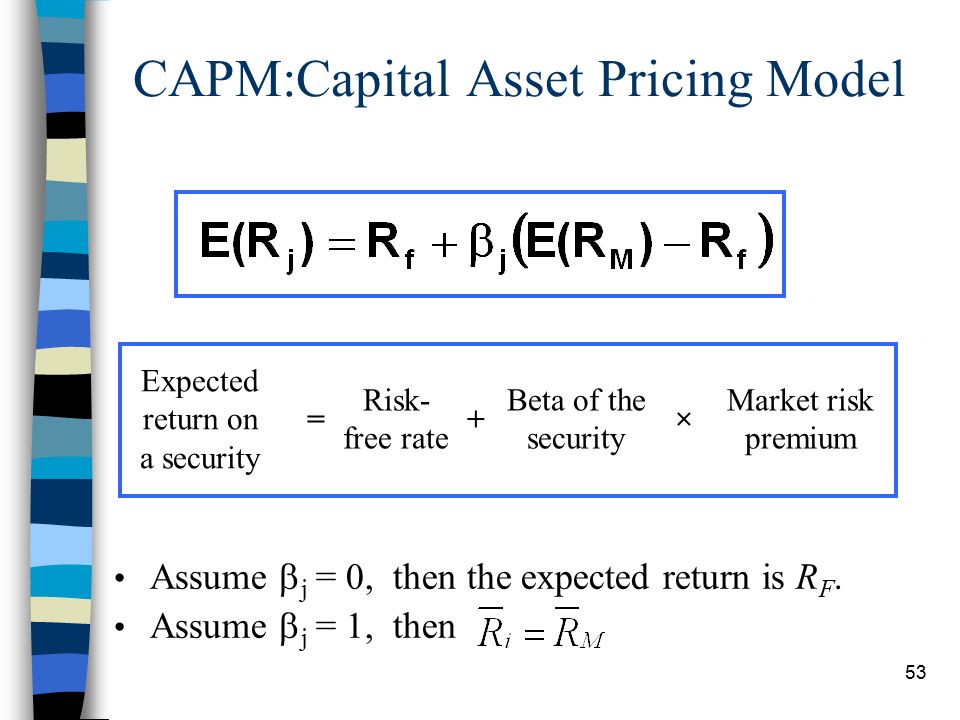
In order to widespread simulation software usage among the manufacturing industry, some authors underline the need of a standard architecture to model production and logistics processes [65, 66, 67]. Literature suggested to focus on a new reference framework for manufacturing simulation systems, that implement both a structure and a logic closer to real production systems and that may support industrial processes optimization [68, 69]. A broad literature survey on MMJIT with setups can be found in [49] while a comprehensive review of the different approaches to determine both kanban number and the optimal sequence to smooth production rates is present in [10]. In 1924 Henry Ford’s Highland Park plant, and later the River Rouge operation, mass-produced Model T parts just-in-time for assembly while assembly lines pulled work forward to the next assembly stations just-in-time.
This changeover time is more obvious as a cost of production than the less tangible and harder-to-quantify costs of over production. It’s unknown exactly when Japanese manufacturers began adopting JIT manufacturing practices, but it is certain that they were triggered by the economic climate of the post-World War II era. Following the war, Japan lacked the cash to finance big-batch, large inventory production methods used by other developed countries. The JIT inventory system aligns production schedules with the delivery of supplies. These systems increase efficiency and decrease waste by receiving goods on an as-needed basis.
Being a multi-objective problem, the MMJIT with setups has been approached in different ways, but it seems that no one succeeded in solving the problem using a standard mathematical approach. Most of the existing studies in the literature use mathematical representations, Markov chains or simulation approaches. Some authors [10, 40] reported that the following parameters may vary within the research carried out in the recent years, as shown in Table 1 below. Since the 80’s, the Japanese production techniques and philosophies spread among the Western manufacturing companies. This was possible because the Toyota Motor Company experience was indeed a success.
Using simulations to validate JIT heuristics
Companies employ this inventory strategy to increase efficiency and decrease waste by receiving goods only as they need them for the production process, which reduces inventory costs. Labor geographers have also researched the impact of new forms of work organization in nonmanufacturing sectors such as services. Similarly, in emerging cultural and creative industries such as new media, even high-skilled employment is project based such that an employee’s tenure in any one workplace may not extend beyond an immediate contract. Like in the Justice for Janitors campaigns these shifts coincide with a move from individual workplace toward regional or local bargaining strategies which match shifting patterns of employment. In the former nations, firms in both more traditional manufacturing and knowledge-intensive new economy sectors also rely on these institutions for initiating and implementing innovation. In a JIT model, the manufacturer has complete control over the manufacturing process, which works on a demand-pull basis.

It includes the broad view of quality but goes beyond this to address the unique opportunities presented by the environment and enabled by information technology. In regard to labor market regulations, there has been some relaxation of the legislation as to agency work and hours of work (possibility of discretionary working hours for white collar workers). The economic context of Japanese firms changed at the beginning of 1990, when the speculative “bubble” economy burst. The end of speculation resulted in slumping domestic consumption together with plummeting asset values (real estate, stocks). In fact, a long series of recessions and the deflationary spiral were set in and it is only from 2003 that economic recovery has been persistent and domestic investment has picked up.
What is Just-in-Case manufacturing?
If anything, this pandemic has taught us to consider all options and find the happy middle ground that is between optimal and practical. This global crisis has given us the opportunity to re-learn and reconsider the traditional methods of manufacturing to say the very least. The preferred solution now is to use digital technologies to build what production system is preferred by just in time agility and resilience into operations. Tools like application platforms can help manufacturers pivot quickly when necessary. Technologies like additive manufacturing make it possible for teams to print or fabricate parts when supply is disrupted. “The same thing happened in the car business nine years ago, when the tsunami hit Japan.
- They can not only track when the processes are completed but can also keep an eye on any delays, bottlenecks, or issues occurring during the steps.
- However, this approach comes with significant costs for purchasing and maintaining that inventory.
- The productivity facet of lean/JIT has been described as nothing sitting idle, which wastes time.
- Omnichannel retailing requires a high level of inventory accuracy and the development of solutions such as microfulfilment systems1—highly automated systems deployed close to the concentration of demand.
- It perfected the famous Toyota flexible production system (Just-in-Time at the core) with the affiliates to the Toyota group concentrated in that area.
- In 1924 Henry Ford’s Highland Park plant, and later the River Rouge operation, mass-produced Model T parts just-in-time for assembly while assembly lines pulled work forward to the next assembly stations just-in-time.
On-demand library acquisitions in science libraries mimic the “just-in-time” model. This is often contrasted with the “just-in-case” model of acquisitions where materials are acquired based on some anticipated future use. But it is clear that decisions to purchase materials have to be judiciously considered since many books in science libraries may be rarely (if ever) used (O’Neill and Gammon, 2014).
Now it’s electronics, and the virus from China.”, wrote Scott Tong from Marketplace. Since the JIT model requires a lot of shipping back and forth between the supplier, manufacturer, and customer, it can have detrimental effects on the environment due to over consumption of fossil fuels and packaging. Just-in-time makes it very difficult to rework orders, as the inventory is kept to a bare minimum and only based on the customers’ original orders.
TEN STEPS TO LEAN/JIT PRODUCTION
The so-called “Toyota Production System” (TPS) seemed to be the “one best way” to manage a manufacturing production site. Since Japan is a physically small country with minimal resources and a large population, the Japanese have always been careful not to waste resources such as time, labor, and space. Waste is seen as abhorrent to the Japanese because they have so little space and so few natural resources.
‘Teenage Mutant Ninja Turtles: Mutant Mayhem’ Director Says They Made A Point Of Treating Their Animators “Ethically” Because of Seth Rogen – Decider
‘Teenage Mutant Ninja Turtles: Mutant Mayhem’ Director Says They Made A Point Of Treating Their Animators “Ethically” Because of Seth Rogen.
Posted: Mon, 07 Aug 2023 20:50:00 GMT [source]
NetSuite has packaged the experience gained from tens of thousands of worldwide deployments over two decades into a set of leading practices that pave a clear path to success and are proven to deliver rapid business value. With NetSuite, you go live in a predictable timeframe — smart, stepped implementations begin with sales and span the entire customer lifecycle, so there’s continuity from sales to services to support. If an organization’s forecasting can’t account for a surge in demand, for instance, it won’t have the stock to fill those orders. JIT inventory management relies heavily on precise forecasting and strong relationships with key suppliers. When something goes wrong with either of those, that’s a problem because there are no backup options in place.
The History of Just In Time Manufacturing
Any unnecessary or non-value-adding steps can be eliminated and wasteful processes can be reduced to a minimum; in-sync with the core principle of Just-in-Time manufacturing. Atheer optimizes the human component of Just In Time Manufacturing with the tools they need to do their best work every time. A Connected Worker platform reduces changeover time by providing heavily standardized work instructions to help workers adhere to schedules. Manufacturers can also put time consuming job and work instruction assignments on autopilot with Job Scheduling features to support production schedules.
- The war left Japan without the working capital to finance big-batch production methods that were the norm in other developed nations.
- This in turn provides the need for many complementary businesses to run in parallel thereby improving the employment rates in that particular demographic.
- Brewer claims that once he began thinking of IT operations as a factory, Six Sigma immediately became relevant.
- By designing and managing the cell in this way, maximum labor productivity can be preserved even if customer demand changes over time.
- Many Japanese firms had to take a decisive step towards overseas production and globalization.
- The iceberg represents the Company’s problems such as bottlenecks, low quality, long setups, and lack of training.
The idea is that nothing is made, and no process is started without a submitted order from the customer. It’s virtually impossible for an organization to order materials and plan a strict pull system, which is where Heijunka comes in. Developed as part of the Toyota Production System, Heijunka translates to mean production leveling. By leveling either by volume or type, you can develop a system that not only works for your specific product and facility but sets your organization up for Lean success.
Siemens & BayWa offset manufacturing supply chain emissions
This reduces the slow cycles and small stops that prevent Just In Time production from functioning at peak performance. This is highly useful when it comes to making processes more efficient and cutting unnecessary steps. This continuous real time measurement of each step also gives an idea of how much time a product takes to be made from start to finish so that manufacturers can predictably meet customer demands and maximize working capital.

Automation and Robotic solutions are being developed to assist human operators (Glock et al., 2021), including wearable technology items. Future developments are likely to allow warehousing units to perform further value-adding services in addition to the bulk breaking, labeling, packaging, and kitting operations typically offered today (Hotze, 2016). In [48], the authors compared a Bounded Dynamic Programming (BPD) procedure with GCM and with an Ant Colony (AC) approach, using as OF the minimization of the total inventory cost. They found that BDP is effective (1,03% as the average relative deviation from optimum) but not efficient, requiring roughly the triple of the time needed by the AC approach. Meanwhile, GCM was able to find the optimum (13% as the average relative deviation from optimum) on less than one third of the scenarios in which the AC was successful.
Improve or Grow Your Business With a JIT Inventory Management System
To see what we mean, checkout our most popular YouTube video on converting batch-and-queue manufacturing to a continuous one-piece flow operation. Arguably the most popular of just in time concepts is the idea of continuous flow, or what is also called one-piece flow. Eiji Toyoda and Taiichi Ohno, Japanese industrial engineers, created the system when Toyota Motor Company (TMC) recognized that U.S. carmakers of that era were outpacing their Japanese counterparts.

Six Sigma processes were used to calculate server response times, and when the discrepancies between them were analyzed, the IT department realized that the problem was not with the bandwidth. This discovery ended up saving the company from a huge expense that would not have addressed the initial problem. Brewer claims that once he began thinking of IT operations as a factory, Six Sigma immediately became relevant. Simply produce and deliver finished goods just in time to be sold, subassemblies just in time to go into subassemblies, and purchased materials just in time to be transformed into fabricated parts. The goal of lean/JIT is to find practical ways to create the effect of an automated industry that will come as close as possible to this concept of ideal production. In this way, equipment like presses and other short-cycle or batch-oriented processes can be decoupled from continuous flow operations and the over production is kept to a minimum.
It’s ready to work when you are, automatically collecting real-time data, making the calculations and then displaying it in easy-to-read graphs and charts. In addition, you have no control over your suppliers or any issues they might be having. This means that even if you accurately estimate your material requirements, your suppliers can always fail to deliver and delay your production schedule. A just-in-time (JIT) inventory system is a management strategy that has a company receive goods as close as possible to when they are actually needed. So, if a car assembly plant needs to install airbags, it does not keep a stock of airbags on its shelves but receives them as those cars come onto the assembly line.




